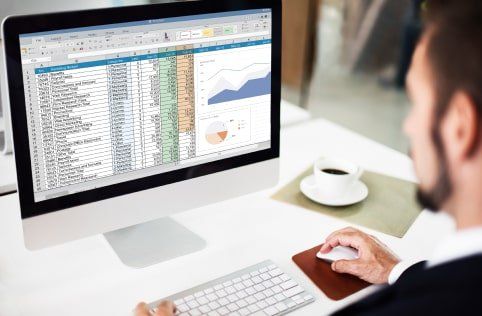Flujo de trabajo de la ciencia de datos
Así que ha decidido emprender el camino de la ciencia de datos. ¡Es una excelente noticia! La ciencia de datos es la manera de llevar su análisis a un nivel completamente nuevo, lo que le permitirá obtener información sumamente precisa que ayudará a que su negocio crezca.
Pero, ¿dónde comenzar?
En primer lugar, hay que configurar un flujo de trabajo que determine las distintas fases del proyecto. El uso de un flujo de trabajo de ciencia de datos bien definido resulta útil, ya que proporciona una forma sencilla de recordar a todos los miembros del equipo de ciencia de datos el trabajo que se debe realizar para llevar a cabo un proyecto de ciencia de datos.

El flujo de trabajo de la ciencia de datos tiene cuatro fases bien definidas:
- Fase de preparación
- Fase de análisis
- Fase de reflexión
- Fase de difusión
Fase de preparación
Antes de realizar cualquier análisis, el científico de datos debe adquirir los datos y luego reformatearlos en un formato que sea compatible con la tecnología de ciencia de datos que se utilizará.
El primer paso obvio en cualquier flujo de trabajo de ciencia de datos es adquirir los datos para analizar. Los datos se pueden adquirir de una variedad de fuentes, como:
- Repositorios en línea, como sitios web públicos (por ejemplo, conjuntos de datos del censo de EE. UU.).
- A pedido de fuentes en línea a través de una API (por ejemplo, el flujo de datos financieros de Bloomberg).
- Generados automáticamente por aparatos físicos, como equipos de laboratorio científico conectados a computadoras.
- Generados por software de computadora, como registros de un servidor web o clasificaciones producidas por un algoritmo de aprendizaje automático.
- Ingresados manualmente en una hoja de cálculo o archivo de texto por un humano.
Los datos sin procesar probablemente no estén en un formato conveniente para que un programador ejecute un análisis en particular, a menudo debido a la sencilla razón de que fueron formateados por otra persona sin el análisis de ese programador en mente. Un problema relacionado es que los datos sin procesar a menudo contienen errores semánticos, entradas faltantes o un formato inconsistente, por lo que es necesario "limpiarlos" antes del análisis.
Los programadores reformatean y limpian los datos ya sea escribiendo scripts o editándolos manualmente en, por ejemplo, una hoja de cálculo.
Fase de Análisis
La actividad principal de la ciencia de datos es la fase de análisis: escribir, ejecutar y refinar programas informáticos para analizar y obtener información a partir de los datos. Nos referiremos a este tipo de programas como scripts de análisis de datos, ya que los científicos de datos suelen preferir utilizar lenguajes de "scripting" interpretados, como Python, Perl, R y MATLAB. Sin embargo, también utilizan lenguajes compilados, como C, C++ y Fortran, cuando corresponde.
Fase de reflexión
La ciencia de datos suelen alternar entre las fases de análisis y reflexión mientras trabajan. La fase de reflexión implica pensar y comunicar los resultados de los análisis. Puede consistir en tomar notas y compartirlas en reuniones con otros miembros del equipo para comparar y contrastar, considerar alternativas y organizar los conocimientos obtenidos en el proceso.

Fase de difusión
La fase final de la ciencia de datos es la difusión de los resultados, generalmente en forma de informes escritos, como memorandos internos, presentaciones de diapositivas, documentos técnicos sobre políticas o negocios o publicaciones de investigación académica. El principal desafío aquí es cómo consolidar todas las distintas notas, bocetos a mano alzada, correos electrónicos, guiones y archivos de datos de salida creados a lo largo de un experimento para ayudar en la redacción. Se necesita un equipo muy organizado para que esta fase funcione correctamente, ya que se obtendrá una gran cantidad de datos en diferentes formatos.
Esta es una descripción general muy breve del flujo de trabajo de la ciencia de datos. Si desea obtener más información sobre este tema, estaremos encantados de ayudarlo. ¡Hablemos! Gracias por leer.








